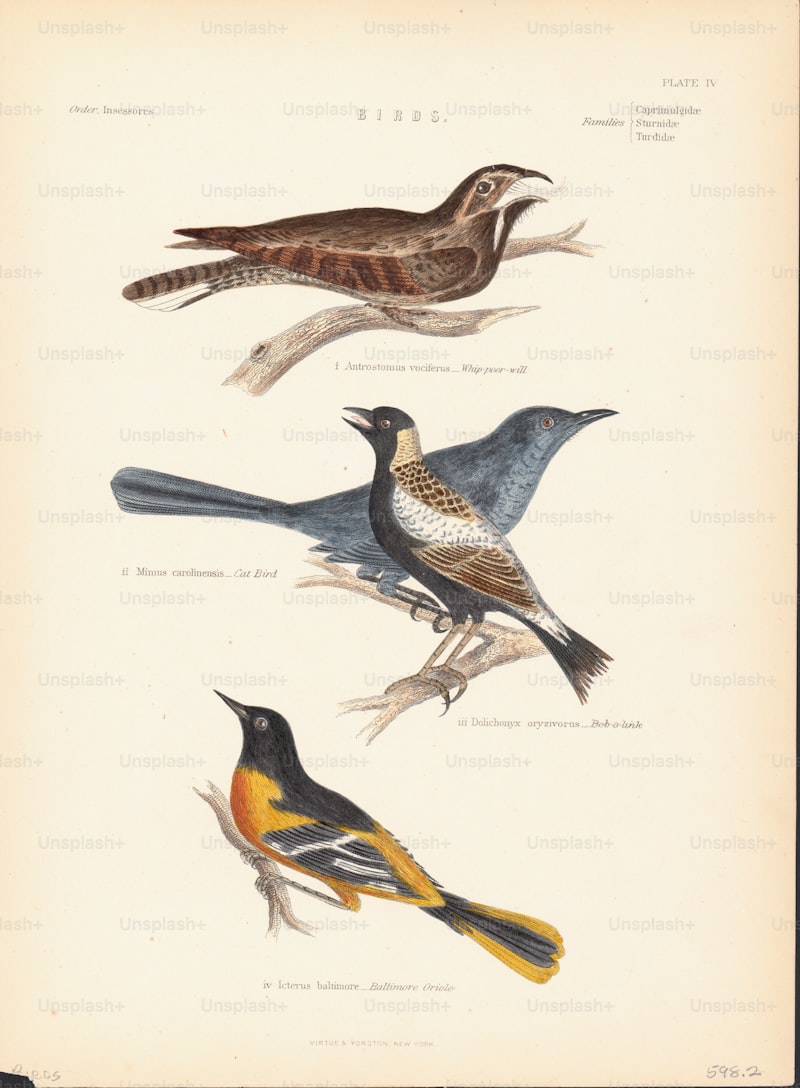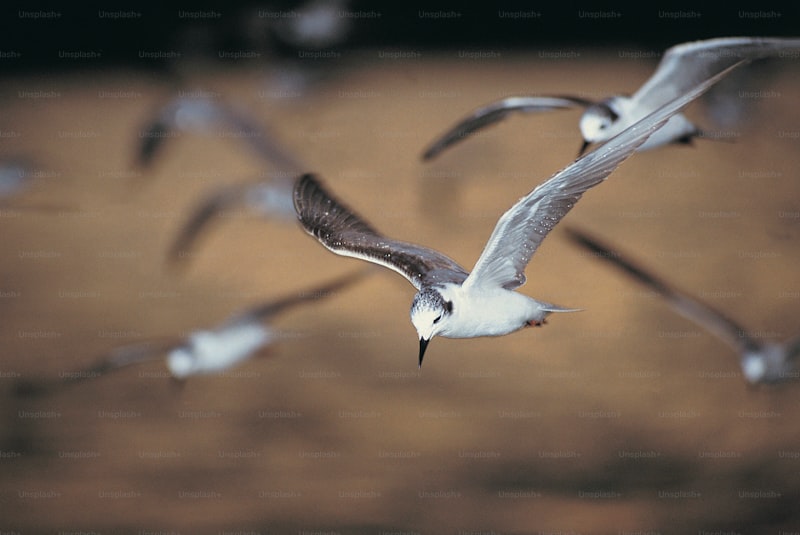At its core, bioinformatics merges biology with information technology. It’s like having a supercharged microscope that allows scientists to zoom into the tiniest details of avian genomes. By analyzing vast amounts of genetic data, researchers can piece together the puzzle of how birds evolved, why certain species thrive in specific environments, and even predict how they might respond to climate change.
Take the example of the Galápagos finches studied by Charles Darwin. Today, bioinformatics tools enable scientists to delve deeper than ever into these finches’ genomes, understanding the precise genetic changes that led to their diverse beak shapes and specialized diets. It’s not just about classification anymore; it’s about uncovering the genetic underpinnings of diversity and adaptation.
Moreover, bioinformatics isn’t limited to just genetics. It encompasses computational tools that model ecological niches, track migratory patterns using satellite data, and analyze complex behaviors through AI algorithms. This multidisciplinary approach paints a comprehensive picture of avian life, from the molecular level to ecosystem dynamics.
Imagine a future where bioinformatics helps us conserve endangered species by understanding their genetic health and designing targeted conservation strategies. Picture researchers using advanced computational models to predict how migratory birds might alter their routes due to changing climates, guiding conservation efforts proactively.
Decoding the Avian Genome: Bioinformatics Unravels Bird Evolution
Birds, with their diverse forms and behaviors, have long intrigued scientists seeking to understand their evolutionary journey. The avian genome, comprised of DNA sequences unique to birds, holds clues that bioinformatics specialists meticulously decode. By analyzing these sequences, researchers can trace the evolutionary relationships between different bird species and even shed light on the ancient origins of flight.
Imagine the avian genome as a vast library of information, each gene a chapter in the story of bird evolution. Bioinformatics tools act as skilled librarians, organizing and interpreting this genetic data. They compare sequences across species, identifying similarities and differences that reveal how birds adapted to various environments over millions of years.
One key area of study is the genetic adaptations that enabled birds to conquer the skies. Through bioinformatics, scientists can pinpoint genetic markers associated with flight development. They can also track how different bird lineages diverged from their common ancestors, offering a glimpse into the branching paths of avian evolution.
Moreover, bioinformatics doesn’t just uncover the past; it also informs conservation efforts today. By understanding the genetic diversity within bird populations, researchers can better assess conservation priorities and develop strategies to protect endangered species.
Flight of Discovery: How Bioinformatics Shapes Avian Conservation
Imagine a scenario where every flutter of a wing, every chirp in the dawn chorus, and every migration pattern is decoded through the lens of computational biology. Bioinformatics, at its core, is the art of extracting meaningful insights from vast amounts of biological data. For avian conservationists, this means a deeper understanding of genetic diversity, population dynamics, and even the impact of climate change on bird habitats.
One of the most awe-inspiring applications of bioinformatics in avian conservation is its role in unraveling the mysteries of bird migration. By analyzing DNA sequences and tracking data collected from geolocators, researchers can map out migratory routes with unprecedented accuracy. This not only helps in identifying crucial stopover sites but also in pinpointing areas where conservation efforts are most needed.
Furthermore, bioinformatics aids in studying the genetic basis of avian diseases and population declines. By sequencing the genomes of threatened bird species, scientists can identify genetic markers associated with resilience or susceptibility to diseases. This knowledge is pivotal in designing effective strategies for captive breeding and reintroduction programs.

Moreover, bioinformatics plays a vital role in monitoring the impact of environmental changes on bird populations. Through advanced statistical modeling and data integration, researchers can predict how climate change will alter bird habitats and populations over time. This proactive approach enables conservationists to implement preemptive measures to safeguard vulnerable species.
From Tweets to Genes: Bioinformatics Revolutionizes Birdsong Studies
Imagine decoding the secret language of birds — their melodies, rhythms, and even emotions — all through the power of bioinformatics. In recent years, researchers have embarked on a fascinating journey using advanced computational techniques to unravel the complexities of birdsong. This emerging field, bridging biology with technology, holds immense promise in understanding avian communication and its evolutionary significance.
Birdsong, once solely observed through field recordings and behavioral studies, is now entering a new era thanks to bioinformatics. By analyzing the genetic codes of birds, scientists can trace the roots of vocalizations back to their biological origins. Just as human languages evolve over generations, birdsong also evolves through genetic changes over millennia. Bioinformatics tools allow researchers to sift through vast amounts of genomic data, pinpointing specific genes that influence vocal learning and development in birds.
What makes bioinformatics truly revolutionary in birdsong studies is its ability to connect the dots between genes, neural circuits, and behavior. It’s like uncovering a musical score written in DNA — each note and pause revealing a story of adaptation and communication in the avian world. Through computational models and genomic analyses, researchers can simulate how mutations in certain genes might alter birdsong patterns, offering insights into the mechanisms behind vocal learning and social interactions among birds.
Moreover, bioinformatics isn’t just confined to the laboratory. Field biologists now collect not only sound recordings but also genetic samples from bird populations worldwide. This multidisciplinary approach enriches our understanding of how environmental factors, such as habitat loss or climate change, influence the evolution of birdsong. By studying the genetic diversity of species, scientists can predict how birdsongs might change in response to future environmental challenges.
In essence, bioinformatics has democratized birdsong research, enabling collaboration across disciplines and continents. It fosters a global community of scientists who share data, tools, and discoveries, amplifying our ability to decipher the language of birds in unprecedented detail. As we delve deeper into the intersection of biology and technology, one thing is certain — the symphony of birdsong will continue to captivate and inspire us, echoing through both the skies above and the code of our genes.
Navigating the Avian Family Tree: Bioinformatics Insights into Bird Phylogeny
Exploring the intricate web of avian evolution unveils a fascinating journey through the branches of the bird family tree. Bioinformatics, a pivotal tool in modern biology, plays a crucial role in deciphering bird phylogeny. By analyzing genetic data from diverse avian species, scientists can reconstruct evolutionary relationships with unprecedented detail.
Imagine bioinformatics as a digital map, where each sequence of DNA or protein acts as a coordinate point. These points, when compared across species, reveal clues about shared ancestry and divergence. It’s akin to unraveling a mystery novel, where every page turned provides new insights into the characters’ relationships.
At the core of bird phylogeny lies the quest to understand how various bird species are related. Bioinformatics methods sift through vast datasets, aligning genetic sequences and constructing phylogenetic trees. These trees are like genealogical charts, depicting evolutionary history over millions of years. They not only showcase the common ancestors but also highlight adaptations that shaped avian diversity.
Rhetorical questions naturally arise: How did flight evolve among birds? What genetic changes led to the diversity of beak shapes? Bioinformatics doesn’t just answer these questions; it illuminates the paths birds took on their evolutionary journey. Just as a historian traces civilizations through artifacts, bioinformaticians trace bird lineages through genetic markers.
Metaphorically, bird phylogeny is a grand tapestry, each thread representing a species’ genetic signature. Through bioinformatics, scientists weave these threads into a coherent narrative of avian evolution. It’s a story where each chapter reveals new surprises, from the ancient origins of flight to the adaptive radiations in different environments.
Survival Strategies in Silico: Bioinformatics Tools Aid Avian Adaptation Research
Ever wondered how birds, with their diverse habitats and behaviors, adapt so remarkably to their environments? The answer lies in the intricate world of bioinformatics tools that decode their survival strategies. Avian adaptation research, aided by these tools, unveils the genetic blueprints behind their resilience.
Bioinformatics tools serve as virtual laboratories where scientists delve into vast amounts of genomic data. They analyze how birds evolve to thrive in diverse climates, from the Arctic’s icy expanses to the Amazon’s lush jungles. These tools sift through genomes like detectives, uncovering genetic mutations that enable birds to navigate challenges such as climate change or urbanization.
Imagine bioinformatics tools as magnifying glasses for genetic detectives. They zoom into the smallest DNA sequences, revealing how certain genes equip birds with unique survival skills. For instance, some species have genes that regulate metabolism efficiently, crucial for enduring extreme temperatures or long migrations.
Rhetorical question: Ever wondered how a tiny songbird migrates thousands of miles each year without getting lost?

In the realm of bioinformatics, scientists use algorithms to compare genomes of different bird species. They pinpoint genetic similarities and differences, akin to uncovering clues in a mystery novel. These comparisons shed light on evolutionary pathways and help predict how birds might adapt in the face of future challenges.
Metaphor: Bioinformatics tools are like GPS systems guiding researchers through the complex maze of avian genomes.
Avian Flu Watch: Bioinformatics Tools for Predicting Bird Disease Outbreaks
In today’s interconnected world, keeping tabs on avian flu outbreaks has become increasingly crucial. Bioinformatics tools play a pivotal role in this endeavor, offering advanced methods to predict and monitor disease spread among bird populations.
Bioinformatics, at its core, blends biology with computer science, harnessing data analysis and computational techniques to decode biological processes. When applied to avian flu surveillance, these tools sift through vast datasets of genetic sequences from avian influenza viruses. By analyzing these sequences, scientists can identify mutations that might enhance the virus’s ability to spread or evade current vaccines.
One of the key bioinformatics approaches involves phylogenetic analysis, which maps the evolutionary relationships between different virus strains. This method helps track how avian flu strains evolve over time and across geographical regions. By understanding these evolutionary paths, researchers can anticipate which strains are more likely to cause widespread outbreaks.
Machine learning algorithms also play a pivotal role in predictive modeling. By training models on historical outbreak data and environmental factors, these algorithms can forecast potential hotspots for avian flu activity. Imagine it like a weather forecast but for disease outbreaks, using past patterns to predict future risks.
Furthermore, epidemiological modeling integrates bioinformatics data with factors such as bird migration patterns and climate conditions. This holistic approach provides a comprehensive view of how avian flu might spread across different bird species and regions. It’s akin to creating a roadmap that highlights vulnerable areas and populations.
In essence, bioinformatics tools are the frontline defenders in our fight against avian flu. They empower scientists to stay ahead of outbreaks, enabling timely interventions and targeted prevention strategies. As these tools continue to evolve, so too does our ability to safeguard both bird populations and human health from the threat of avian influenza.
Flying High with Data: Bioinformatics and Avian Migration Patterns
Imagine a world where birds navigate vast distances with pinpoint accuracy, crossing continents and oceans effortlessly. This phenomenon, known as avian migration, has long captivated scientists and nature enthusiasts alike. But what fuels this incredible journey? The answer lies in the intricate field of bioinformatics, where data and technology intersect to unravel the mysteries of bird migration patterns.
Bioinformatics, at its core, harnesses the power of data analysis and computational tools to decode biological processes. When applied to avian migration, it transforms our understanding of how birds embark on journeys that span thousands of miles. By analyzing vast datasets collected from tracking devices and environmental sensors, scientists can map migration routes, predict stopover locations, and even study the impact of climate change on bird behavior.
One of the key marvels of bioinformatics in studying avian migration is its ability to reveal patterns that were once invisible. Imagine being able to track a songbird from its breeding grounds in North America all the way to its wintering grounds in South America, thanks to data-driven insights. These journeys are not just flights of fancy but crucial for bird survival and ecosystem balance.
The role of bioinformatics extends beyond mere observation. It allows researchers to ask probing questions: How do birds navigate across continents without getting lost? What environmental cues guide their journey? By crunching numbers and analyzing trends, bioinformaticians can provide answers that were previously elusive, paving the way for conservation efforts and ecological management.
In essence, bioinformatics serves as a powerful tool for understanding the complexities of avian migration. It transforms raw data into meaningful narratives, offering a glimpse into the lives of birds that soar across the globe. As technology advances and datasets grow, the field continues to expand, offering new insights and fostering a deeper appreciation for the wonders of nature.
Bioinformatics opens doors to a world where data paints the skies with stories of migration and adaptation. It bridges the gap between scientific inquiry and natural wonder, reminding us that even in the vastness of the skies, every flight tells a tale worth exploring.
Frequently Asked Questions
What are some examples of bioinformatics applications in avian conservation
Discover how bioinformatics aids avian conservation through examples like genetic diversity analysis, population modeling, and habitat suitability assessments.
How is genomic data used to study avian populations
Learn how genomic data is utilized to investigate avian populations, exploring genetic diversity, adaptation mechanisms, and population dynamics.
What are the key bioinformatics tools for analyzing avian genomes
Learn about the essential bioinformatics tools used specifically for analyzing avian genomes, including software and databases tailored for genomic data processing, alignment, annotation, and evolutionary analysis.
How does bioinformatics help in understanding avian evolutionary biology
Learn how bioinformatics aids in unraveling the evolutionary history of birds, using computational tools to analyze genomic data and study genetic variations over time.
What is the role of bioinformatics in avian research
Learn about the pivotal role of bioinformatics in avian research, exploring how computational analysis of genetic data enhances our understanding of avian genomes, evolutionary history, and disease resistance. Discover how bioinformatics tools enable researchers to decipher complex biological information and accelerate advancements in avian health and conservation.



